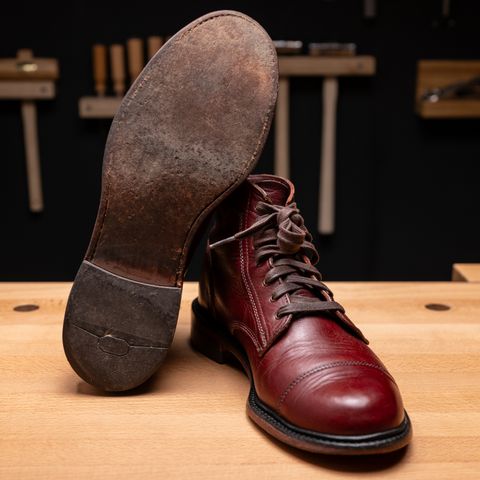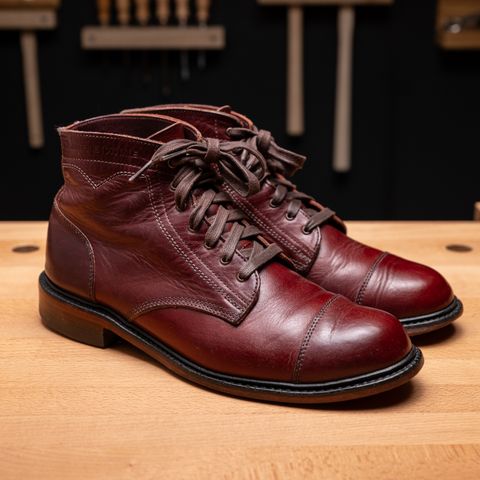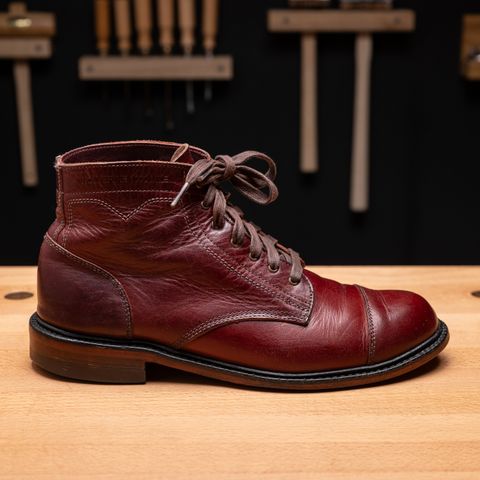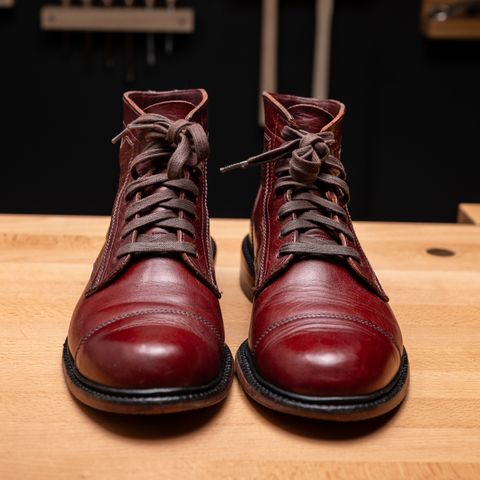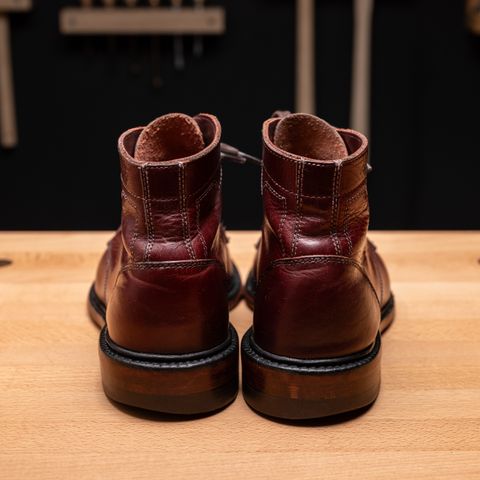About
The 1000 Mile Krause is a heritage boot model in Wolverine's 1000 Mile collection, noted by collectors for its particularly sturdy appearance compared to other models in the line. The Krause model represents a variant within Wolverine's flagship 1000 Mile heritage boot collection, which was first introduced in the 1910s and named for its promised durability of 1000 miles of wear.
About
The 1000 Mile Krause is a heritage boot model in Wolverine's 1000 Mile collection, noted by collectors for its particularly sturdy appearance compared to other models in the line. The Krause model represents a variant within Wolverine's flagship 1000 Mile heritage boot collection, which was first introduced in the 1910s and named for its promised durability of 1000 miles of wear.
Wolverine, founded in 1883 by G.A. Krause in Rockford, Michigan, developed the 1000 Mile boot as part of its heritage line featuring traditional American construction methods. While the Krause model appears to be a discontinued or limited edition variant, it maintains the same construction standards as other boots in the 1000 Mile collection, including Goodyear welt construction and premium Horween leather materials.
Heritage and development
The 1000 Mile boot collection originated in the 1910s when Wolverine developed what it called the "1000 Mile Shoe," named because it was built to last for 1000 miles of wear. The boots gained their reputation through practical use by workers who appreciated their soft, long-lasting shell horsehide leather, making them ideal for farmers and workers in the logging industry across the northern United States.
G.A. Krause, who founded Wolverine in 1883, established the company as a small leather tannery with a handful of employees in Rockford, Michigan. By 1903, Krause and his sons were producing 300 boots a day in their new factory, and that same year their thriving business brought electricity to Rockford, Michigan, which remains the company's home today.
The development of the 1000 Mile boot was made possible by Wolverine's tannery operations. In 1908, the Krauses built the Wolverine tannery and began supplying their shoe factory with tough, durable horsehide. In 1914, the Wolverine brand name was chosen for shoes made of Wolverine horsehide leather, with the boots being called "1,000 Mile Shoes" because of their exceptional durability.
The specific Krause model within the 1000 Mile collection appears to be named in honor of the company's founder, G.A. Krause, though detailed documentation about this particular variant remains limited. One collector noted having "four pairs of wolverines, including chukkas and krause models" and described "the krause is much sturdier looking" compared to other models in their collection.
Construction and materials
The 1000 Mile Krause features the same construction standards as other boots in Wolverine's heritage 1000 Mile line. The boots use time-tested Goodyear welt construction, which is durable and flexible while allowing the boot to be resoled for years of wear. This construction method involves stitching the upper to a welt, which is then stitched to the sole, creating a robust and repairable boot.
Current production 1000 Mile boots feature premium leather sourced from the Horween Leather Company in Chicago, Illinois. The boots are made with full-grain Chromexcel leather from the famous Horween tannery, which has a deep, rich color with a light pull-up that gains character with wear. Chromexcel is a chrome tan oiled leather that is unique to Horween and gives the boots their distinctive appearance and aging characteristics.
The construction includes classic leather outsoles with Vibram heels from Williamsport, Pennsylvania, and flat waxed cotton laces from Landrum, South Carolina. This approach emphasizes American manufacturing and sourcing throughout the supply chain. The boots feature a fiberboard insole with cork filling in the welt cavity and a fiberglass shank for support.
Heritage 1000 Mile boots are handcrafted in the United States, specifically in Michigan, supporting American workers and maintaining manufacturing traditions that date back to the company's founding. The construction process maintains the same methods used for over a century, ensuring consistency with the historical standards that built Wolverine's reputation.
Sizing and fit
Like other boots in the 1000 Mile collection, the Krause model follows Wolverine's standard sizing characteristics. Wolverine boots typically run half a size larger than standard sneakers, with sizing comparable to other heritage boot brands including Red Wing, Thursday, and Timberland. The company recommends sizing down by a half or even a full size from your true size to achieve proper fit.
The 1000 Mile collection features non-removable insoles and offers plenty of room in the toe area, making them suitable for those with narrow feet. Standard boots come in D width, with availability in sizes seven through 12 in whole and half sizes, as well as sizes 13 and 14. Some models in the broader Wolverine line offer 3E width options for wider feet, though specific width options for the Krause model are not clearly documented.
Historical pricing for 1000 Mile boots has been around $400, though this varies by specific model and retailer. The boots' construction quality and materials justify their position in the heritage boot market, with reviewers noting that "you're getting a pair of heritage boots, made in America, Goodyear welted with leather from one of the most reputable tanneries in the country."
References
"About Us Our Story". Wolverine Footwear US. Retrieved September 22, 2025.
"History". Wolverine Worldwide. Retrieved September 22, 2025.
"The History of Wolverine: 1000 Mile Boots, Americana Aesthetic and More". Yahoo Lifestyle. Retrieved September 22, 2025.
"Wolverine 1000 Mile Boot Review: 6+ Years Later (Worth It?)". The Gentleman Within. Retrieved September 22, 2025.
"Chromexcel Leather Shoe Care". Kirby Allison. Retrieved September 22, 2025.
"Where are Wolverine Boots Made? From Heritage to Sustainability". Boot World. Retrieved September 22, 2025.
"Wolverine World Wide, Inc. History". Funding Universe. Retrieved September 22, 2025.
